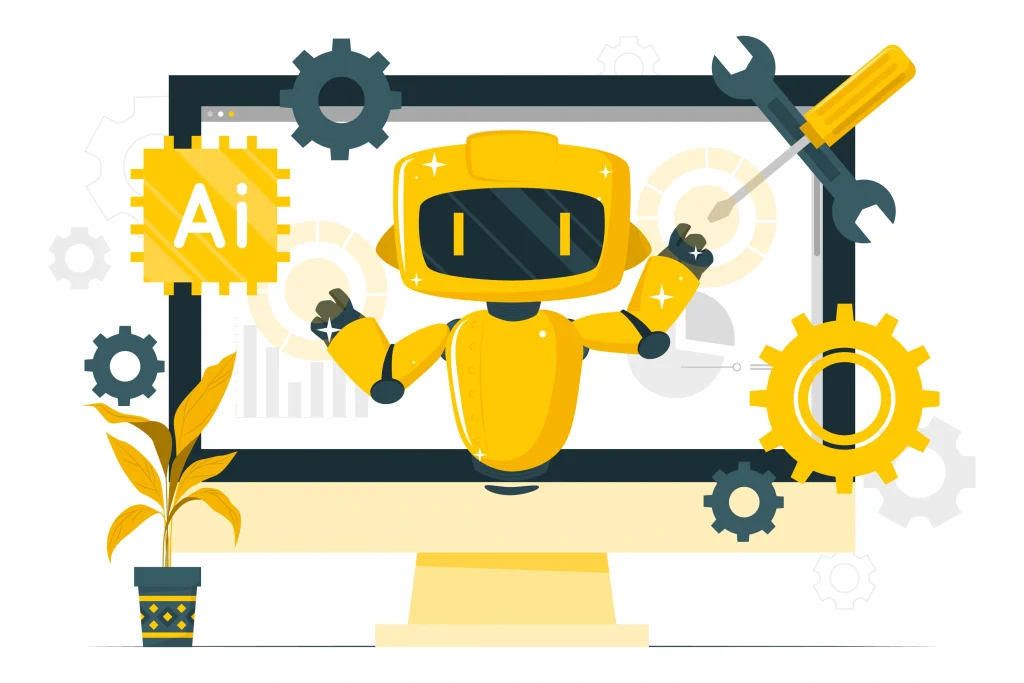The Role of AI in Modern OCR: How It’s Transforming Text Extraction
Optical Character Recognition (OCR) has long been a cornerstone technology for digitizing text from scanned documents and images. However, the integration of Artificial Intelligence (AI) has revolutionized OCR, transforming it into a more robust, accurate, and adaptable tool. By leveraging deep learning for text extraction and natural language processing (NLP), AI-driven OCR now surpasses traditional methods in both speed and precision.
This blog post explores how AI is redefining OCR, the advancements it brings, and why businesses should embrace next-gen OCR tools for text extraction.
How AI Enhances OCR Technology

1. Improved Character Recognition with Deep Learning
Traditional OCR systems rely on predefined templates and rules to identify text. This often leads to errors when dealing with complex fonts, handwriting, or low-quality images. AI-driven OCR, on the other hand, uses neural networks to “learn” from vast amounts of data, enabling it to recognize patterns more effectively.
Key Advancements:
- Adaptability: AI models can detect text in varying styles, sizes, and orientations.
- Accuracy: Deep learning algorithms improve recognition accuracy, especially for complex scripts or distorted text.
Example: Google Vision AI uses deep learning to extract text from images containing handwritten notes or artistic fonts with remarkable accuracy, outperforming rule-based systems.
2. Integration of Natural Language Processing (NLP)
AI-powered OCR doesn’t just recognize characters; it understands context. By integrating NLP, these systems can process entire sentences, correct errors, and even detect the intended meaning of ambiguous text.
Applications of NLP in OCR:
- Error Correction: Automatically corrects spelling errors in extracted text.
- Contextual Understanding: Differentiates between similar characters (e.g., ‘1’ vs. ‘l’) based on surrounding words.
- Multilingual Support: Processes text in multiple languages, including those with complex grammar and structure.
Illustration: An AI-powered OCR tool processes a bilingual legal document, accurately extracting and translating text into the desired language while preserving its original context.
3. Faster and Smarter Text Extraction with Neural Networks
AI leverages convolutional neural networks (CNNs) to identify patterns in images and recurrent neural networks (RNNs) to sequence text. This dual approach enables real-time text extraction, even from challenging sources like faded documents or skewed scans.
Key Benefits:
- Speed: Processes large batches of documents in minutes.
- Adaptability: Handles complex layouts, such as multi-column pages or overlapping text and images.
Real-Life Scenario: A logistics company uses AI-driven OCR to process thousands of shipping labels daily. The system adapts to inconsistencies in label formats, ensuring accurate and swift data extraction.
AI vs. Traditional OCR: A Performance Comparison
| Feature | Traditional OCR | AI-Driven OCR |
|---|---|---|
| Accuracy | Struggles with non-standard fonts | Excels with diverse text styles |
| Multilingual Support | Limited | Robust, including rare scripts |
| Processing Speed | Slower for complex layouts | Faster, even for challenging tasks |
| Error Handling | Limited | Self-corrects using NLP |
Verdict: AI-powered OCR clearly outperforms its traditional counterpart in nearly every metric, making it the ideal choice for modern text extraction needs.
Real-World Applications of AI-Driven OCR
1. Healthcare
AI-powered OCR digitizes handwritten prescriptions, medical records, and patient forms with exceptional accuracy.
Example: Hospitals use AI-driven OCR to extract patient data from handwritten intake forms and sync it with electronic health records, reducing manual data entry errors.
2. Finance
Banks and financial institutions process checks, invoices, and loan applications faster using AI-enhanced OCR.
Example: An AI-based OCR tool scans invoices, automatically extracts relevant fields like amount and due date, and integrates them into accounting systems.
3. E-Commerce
Retailers manage inventory and process invoices efficiently with AI-powered OCR.
Example: An online store uses AI-driven OCR to extract product information from supplier catalogs, ensuring accurate updates to its digital inventory.
Why AI-Driven OCR Is the Future
1. Scalability and Flexibility
AI models can adapt to new challenges, such as recognizing emerging fonts or accommodating new languages. Businesses can scale their operations without worrying about document diversity.
2. Continuous Learning and Improvement
AI-powered OCR systems improve over time. As they process more data, their algorithms refine, ensuring even better accuracy and reliability.
3. Enhanced Automation
When combined with other technologies like robotic process automation (RPA), AI-driven OCR can completely automate document workflows, saving time and resources.
Tools Leveraging AI for OCR
1. Picture2Txt.com
- Best for: Quick, accurate text extraction from images and PDFs using AI-powered OCR.
- Features:
- Uses advanced AI algorithms for precise text recognition.
- Handles diverse formats like JPG, PNG, and scanned PDFs with ease.
- Lightweight, web-based platform accessible from any device.
- Supports text extraction in multiple languages and maintains formatting accuracy.
- Why Choose Picture2Txt.com?
Its AI-driven approach ensures superior accuracy and efficiency, making it an excellent choice for both beginners and professionals looking for seamless AI-driven OCR solutions.
2. Google Vision AI
- Offers powerful text recognition for images and PDFs.
- Supports multilingual text extraction and handwriting recognition.
3. Adobe Sensei
- Integrated with Adobe Acrobat for creating searchable PDFs.
- Excels in maintaining document formatting during text extraction.
Key Takeaways
The integration of AI in OCR has redefined text extraction, offering unparalleled speed, accuracy, and adaptability. From healthcare to e-commerce, AI-powered OCR is solving challenges that traditional methods could never fully address.
For businesses and individuals, embracing next-gen OCR tools powered by deep learning for text extraction is not just an upgrade—it’s a necessity in today’s data-driven world. Start exploring AI-driven OCR solutions to revolutionize your workflows and stay ahead in the digital age.
